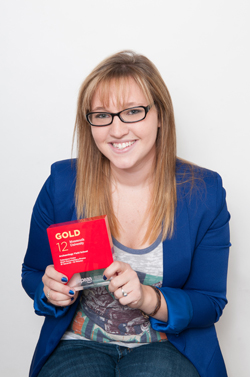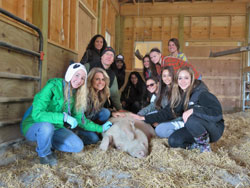Concerns about COVID recovery and post-COVID symptoms are especially prevalent among athletes because they live such an active lifestyle that they may have difficulty returning to. This was the case for Chicago Bears wide receiver Allen Robinson, who missed 11 days and two games after contracting the virus in December of 2021. According to the Chicago Tribune, Robinson lost 10 pounds while he had COVID and described having an itchy throat, fever, and nasal and chest congestion. He struggled to return to conditioning and felt unready to play in the team’s upcoming game due to his persisting symptoms and rocky recovery.
As a National Collegiate Athletic Association (NCAA) Division One school, Monmouth University has a large population of student-athletes, many of whom have been affected by the ongoing spread of COVID over the course of the pandemic. Like many other college students, numerous student-athletes have contracted the virus or have been in close contact with a COVID-positive individual, requiring them to isolate or quarantine as necessary. For student-athletes who become infected with the virus, monitoring their health and ability to return to practice has been of the utmost importance.
“Last year especially, we had a lot of shutdowns. Fortunately, I don’t think we’ve had anyone hospitalized last year or this year. None of our student-athletes have been really sick, but there’s definitely been a good amount of disruptions to practices and competitions,” said Simon Rosenblum, Senior Associate Athletic Director for Sports Medicine.
The CDC has started to loosen COVID restrictions in light of increases in vaccination rates and a subsequent decline in positive cases and related hospitalizations. However, some COVID-positive individuals still experience severe symptoms and are faced with long COVID – a condition in which symptoms of the virus persist for months after initial infection.
In December of 2021, the Centers for Disease Control and Prevention (CDC) decreased the recommended isolation period from ten to five days, citing increases in mild and asymptomatic cases among vaccinated individuals. According to the CDC, the COVID vaccine is intended to reduce the risk of serious illness and death and is effective at reducing hospitalization rates.
However, it is still possible for vaccinated individuals to contract COVID and experience serious symptoms that may require further treatment. For some COVID-positive individuals, it can be difficult to return to normalcy even after their isolation period has concluded due to persisting symptoms, including fatigue, shortness of breath, brain fog, heart palpitations, and other adverse health effects.
“We haven’t had much of the long-COVID that you hear about in the news,” continued Rosenblum. “We’ve had people take a little bit longer to gain their fitness back than you would normally hope for. They’re out for 10 days and might still be experiencing some shortness of breath and that kind of thing.”
Quarantine protocols for student-athletes have fluctuated over the course of the pandemic. Prior to the widespread availability of the vaccine, entire teams were quarantined if one person tested positive. Now, with most individuals having received the vaccine, vaccinated student-athletes do not have to quarantine if they were in close contact with a COVID-positive individual.
Vaccinated individuals who are eligible for the booster dose but do not have it are treated as though they are unvaccinated. “That’s a big pain in the butt for sure, because now you have to sort out who’s a close contact and whether they’re vaccinated and boosted if they’re eligible for it,” described Rosenblum.
New CDC guidance has decreased the isolation period for asymptomatic individuals from 10 to five days. When student-athletes complete their isolation period, they then undergo a gradual return to sport progression in order to ease them back into conditioning and practices before they can make a full return to competing.
“They all see our team physician to listen to their heart, lungs, and all that fun stuff. Then they gradually return to their sport and we monitor that whole process. It’s a gradual five day return before they’re cleared to do everything,” explained Rosenblum.
Under this protocol, recovering student-athletes are required to check in with their athletic trainer after completing each step of the five day progression and report any symptoms they may still be experiencing. If symptoms persist, their progression is discontinued and they are evaluated by the team physician to determine the next steps.
The NCAA describes their main commitment as “protect[ing] the health and safety of college athletes,” as is evident through their rigorous COVID protocols for student athletes competing at NCAA colleges and universities across the nation. Schools with NCAA affiliations are required to enforce the organization’s regulations and policies, as determined by the COVID-19 Medical Advisory Group and their decisions regarding protocols for training, competition, and student athletes’ health amid the pandemic.
“I think Monmouth has been doing a pretty good job of handling COVID among our student-athletes,” said Rosenblum. “We closely monitor their return to their sport and test unvaccinated athletes frequently to pinpoint cases and stop the spread of the virus among our athletic teams.”


